What Uncertainties Remain in Climate Science?
Climate scientists are still uncertain about a number of phenomena that could affect our future. What are the reasons for this uncertainty?
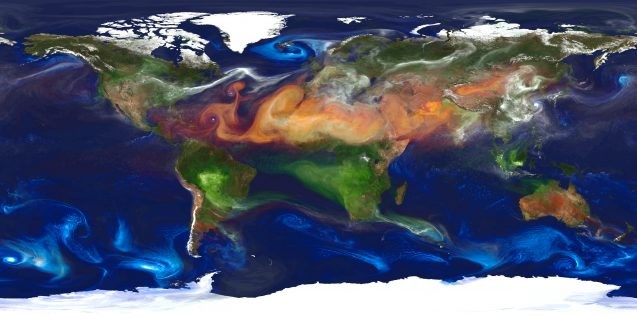
The favored refrain of climate deniers and those who oppose climate policies is that “the science is not settled.” To some degree, this is true. Climate scientists are still uncertain about a number of phenomena. But it is the nature of science to never be settled — science is always a work in progress, constantly refining its ideas as new information arrives.
Certain evidence, however, is clear: global temperatures are rising, and humans are playing a role in it. And just because scientists are uncertain about some other areas, does not negate what they are sure about.
What’s certain and what’s not
Reputable climate scientists around the world are in almost unanimous agreement that human influences have warmed the atmosphere, ocean, and land and that the speed of the changing climate exceeds what can be attributed to natural variability. They are also virtually certain that this warming has been driven by the carbon dioxide and other greenhouse gases produced by human activities, mainly the burning of fossil fuels. Climate scientists are highly confident about these things because of fundamental principles of physics, chemistry, and biology; millions of observations over the last 150 years; studies of ice cores, fossil corals, ocean sediments, and tree rings that reveal the natural influences on climate; and climate models.
Despite this evidence, “In the climate change field, with its countless socioecological factors and interdependent systems, its known unknowns and unknown unknowns, deep uncertainty abounds,” said the World Resources Institute. The uncertainties are due to an incomplete understanding of Earth’s systems and their interactions; natural variability in the climate system; the limitations of climate models; bias; and measurement errors from imprecise observational instruments. In addition, there is great uncertainty about how the climate will be affected by humans and the demographic, economic, technical, and political developments of the future.
Ben Cook, a climate scientist at the Columbia Climate School’s Lamont-Doherty Earth Observatory who studies drought and interactions between land and the climate system, said, “There are a few different sources of uncertainty and depending on the source, there are different kinds of difficulties. On one level, there are the process uncertainties that we have an incomplete understanding of because we don’t have the full spectrum of observations that we would want, and/or we’re limited in the ability to represent those processes within our climate models. There are other uncertainties related to things outside the physical climate system. A good example is the scenario uncertainty. We want to understand what the climate is going to look like at the end of 21st century. That depends on the physics of the climate system. But it also depends upon how many greenhouse gases we ultimately wind up emitting over the next century.”
The rate at which our climate will warm also depends upon the interplay of emissions and interactions between various processes that either lessen or exacerbate disruptions to the climate system, some of which scientists are still uncertain about: cloud formation, water vapor and aerosols, unpredictable natural phenomena like volcanoes, tipping points, and human behavior. What are the reasons behind this uncertainty?
Cloud formation

Clouds play an important role in determining the planet’s energy balance. As the planet warms, cloud patterns everywhere will change: Certain types of clouds will increase in some places and decrease in others. And depending on the type of clouds and the landscape below them, clouds can have a cooling or a warming effect on the planet. Low clouds have a cooling effect because they reflect solar radiation back to space.
High cirrus clouds, on the other hand, warm Earth because they trap heat. Climate models have generally suggested that the warming and cooling effects of clouds will balance each other out over time, but some new studies suggest that global warming could cause more clouds to thin or burn off, leaving Earth increasingly exposed to the sun and warming.
“Cloud feedbacks tend to be very uncertain because observations are a bit limited,” said Cook. “They are kind of restricted to the satellite era, over only the last 40 years. And it’s difficult to understand some of the causality. We want to understand how clouds cause the climate system to change. But at the same time, clouds respond to the climate system.”
In addition, climate models have difficulty incorporating certain information about clouds. Most climate models map features over areas of 100 kilometers by 100 kilometers, though some cloud models may have grids of five kilometers by five kilometers; but even within five kilometers there is a lot of variation in cloud cover. Allegra LeGrande, adjunct associate research scientist at Columbia Climate School’s Center for Climate Systems Research, said, “Sometimes there are processes that are just too small, too complicated, too hard to measure. And you just can’t explicitly include them in the climate models. These tend to be processes like the ephemeral, little wispiness of the clouds. How are you going to translate these tiny ephemeral cloud bits into a climate model of the whole world?”
And yet, “Clouds can make a huge contrast in what kind of climate you simulate for an area,” said LeGrande, who works with climate models to better understand climate more extreme than that of the past. “A cloudy field versus an uncloudy field can make a huge impact on everything—the temperature, the precipitation, the evaporation, the surface energy balance, everything.”
Water vapor and aerosols
Water vapor, the most abundant greenhouse gas, amplifies the warming resulting from other greenhouse gases. Rising temperatures caused by rising levels of carbon dioxide and methane result in more evaporation, which increases the amount of water vapor in the atmosphere. For every added degree Celsius of warming, water vapor in the atmosphere can increase by about 7 percent. Scientists estimate this effect more than doubles the warming that would result from rising carbon dioxide levels alone.
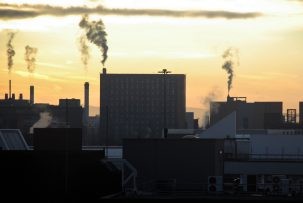
On the other hand, the cars, incinerators, smelters, and power plants that emit climate-warming greenhouse gases also release aerosols—liquid or solid particles in the atmosphere that block sunlight and have a cooling effect on the planet. Natural aerosols like sulfate aerosols produced after volcanic eruptions also cool Earth. But clouds can also form around aerosols, using them as nuclei, so their overall effect is uncertain.
There is also uncertainty about aerosols because no one knows how society will change over time. Will we eventually ban their fossil fuel–burning sources? Will cleaning up air pollution make climate change worse?
Because of these uncertainties, scientists don’t know how water vapor and aerosols will ultimately balance each other out.
Natural variability
There are natural changes in the climate that occur due to different high- and low-pressure areas and air circulation that affect temperature and rainfall. These are particularly important for making projections over smaller regions and shorter time frames.
“On shorter time periods, for example, the next year out to maybe 30 or 40 years, the internal random variability in the climate system is really important,” said Cook. “At regional scales, that kind of time period can be a bit more difficult to predict because you can have just the internal natural variations in the climate system amplifying the effects of climate change, or in some cases, diminishing the effects of climate change.”
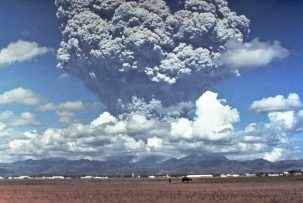
There is also natural variability that results from phenomena such as El Niño and La Niña, which produce cyclical natural global temperature variations. And there is natural variability that stems from unpredictable changes in solar intensity and volcanic eruptions. Volcanic gases condense in the stratosphere to form sulfate aerosols which cool the planet. Scientists have concluded, however, that natural factors contributed far less than humans to the global warming of recent decades.
Tipping Points
There is uncertainty about how close the Earth is to tipping points — when small changes accumulate to cause a larger change that can be abrupt, irreversible, and lead to cascading effects. Because the limits of computing power make it impossible to exactly represent the climate system’s tipping points or their interactions, there is significant uncertainty about these major potential tipping points.
Ocean circulation changes
The Atlantic Meridional Overturning Circulation (AMOC) is a major source of uncertainty when it comes to predicting future climate. The AMOC is the ocean circulation system that carries heat from the Tropics and the Southern Hemisphere north until it loses it in the North Atlantic, Nordic, and Labrador Seas, where the now cooler waters sink deep. The overall circulation depends upon these cold dense waters that sink into the deep oceans in the high latitudes.
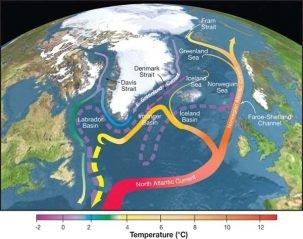
Global warming, however, can affect this circulation by warming surface waters and melting ice, adding fresh water to the system; these factors make the water less saline and dense, preventing it from sinking. Because of this effect, AMOC’s circulation has slowed between 15 and 20 percent in the 20th century, an anomaly unprecedented over the last millennium. Climate models suggest that the AMOC will continue to slow as the climate warms, but how much and what its effects will be are uncertain.
Climate models suggest that if AMOC’s decline is great, Europe will warm slightly, but wind patterns in Europe and precipitation patterns in the Tropics will change significantly. If AMOC slows less, the Northern Hemisphere will get much warmer, wet regions will get wetter, and dry regions will get dryer. While some scientists fear the AMOC could pass a tipping point and collapse altogether, most are fairly confident that this could not happen before 2100.
Thawing permafrost
Permafrost, ground that remains frozen for two or more consecutive years, covers about 24 percent of the exposed landmass of the Northern Hemisphere. Some permafrost, which stores the carbon-based remains of plants and animals that froze before they could decompose, has been frozen for tens or hundreds of thousands of years. Scientists estimate that the world’s permafrost holds 1,500 billion tons of carbon, almost double the amount of carbon currently in the atmosphere.
As temperatures rise, permafrost begins to thaw, releasing its carbon as both carbon dioxide and methane, an even more potent greenhouse gas. There is a great uncertainty about how much carbon thawing permafrost could release as global warming proceeds, and how much will be CO2 versus methane. Climate models suggest that for every degree Celsius the planet warms, 3 to 41 billion metric tons of CO2 could be released. Some scientists feared that permafrost could pass a tipping point where the released carbon drastically speeds up warming, but recent models suggest the runaway scenario is unlikely. Nevertheless, the IPCC has projected that thawing permafrost would increase warming “enough to be important.”
Ice sheet collapse and sea level rise
Scientists understand how much warming oceans will eventually contribute to sea level rise, and it’s a relatively small amount, perhaps a meter, said LeGrande. They do not know, however, how much melting ice sheets could potentially add to sea level rise. The ice sheets covering Antarctica and Greenland present the greatest uncertainty. Ice loss from these ice sheets were most responsible for the sea level rise of the last few decades and will potentially make the largest future contributions to sea level rise.
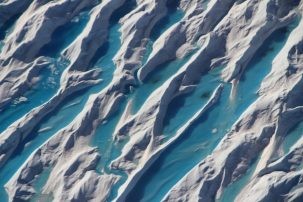
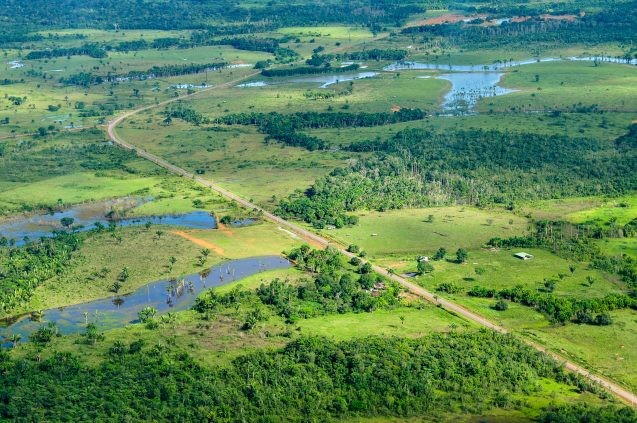
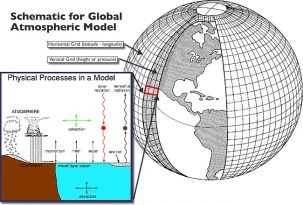
Climate models can help analyze why climate changed in the past and how it could change in the future. But models are not perfect and they have limitations. Moreover, climate models can differ in their level of simplification, grid size, and in how they represent physical phenomena such as clouds, surface atmosphere exchanges, or vegetation cover. Climate modelers must make compromises and settle on one possible variant of the many possible variants, each of which could result in different outcomes. To deal with these limitations, sets of climate models are often run with different variables to generate a range of possible outcomes.
The human factor
The state of our planet in the future depends on how much greenhouse gas is emitted into the atmosphere. Perhaps the biggest uncertainty of all is how much carbon, other greenhouse gases, and aerosols humans will emit in the years to come. This will depend on population and consumption growth, economic development, technological progress, land use changes, and international agreements, as well as all their interactions. Changes in societal preferences and priorities, and political trends will also be critical factors. All these elements will influence how societies and countries take action to fight climate change—how robust and effective their policies are, how much money is put into mitigation and adaptation efforts, and how much synergy results from international cooperation.
Working to reduce uncertainty
Researchers at the Columbia Climate School are constantly working to reduce the gaps in scientists’ understanding, and improve their models, predicated on their observations.
LeGrande is working on paleoclimate simulations using a special sampling approach that requires less computer processing and constrains the simulations against satellite measurements, as well as against paleoclimate archives. In addition, she said, “There are lots and lots of observational campaigns, trained on our ice sheets, trying to understand the surface processes. There are increasingly moves to try to visualize that area underneath the ice sheet. They do drilling missions, and they have plenty of [techniques for] remote sensing at the surface where they’re trying to visualize that interface between the bottom of the ice sheet and the bed. Then, with more powerful computers, they’re able to plug in these empirical observations into ice sheet models.”
“There’s also a lot of work with machine learning now,” said Cook. “Machine learning and AI are very good at finding patterns [and relationships]. Within the climate model community, a lot of people who build these big computer simulations of the climate system are exploring machine learning to identify parameters that give us a much better match to reality. The idea is to reduce some of the process uncertainty and improve the fidelity of our models. The challenge is interpreting those patterns and relationships, and making sure they’re meaningful in a physical or scientific sense, but it [machine learning] can be really valuable for the exploratory process and identifying the sorts of things that might be important.”
Even as the science advances, however, it is critical to recognize and deal with the existing uncertainties in climate science in order to make sound decisions about adapting to climate change. Ignoring uncertainties could increase risks. “Only in understanding the range of plausible possibilities can you really inform adaptation, and policy and planning,” said Cook.
Strategies for adapting to climate change should consider multiple potential outcomes, leave many options open, and identify a variety of solutions. The solutions need to be robust and able to withstand different pressures—for example, farmers diversifying their livelihoods in case of extreme weather, or the expanded use of microgrids to protect communities against power outages. Adaptation measures need to be flexible, able to work under a range of possible future scenarios, and be able to be reassessed or adjusted as the science advances.
The uncertainties in climate science that remain are not a justification for not acting to slow climate change, because uncertainty can work both ways: Climate change could prove to be less severe than current projections, but it could also be much worse.
